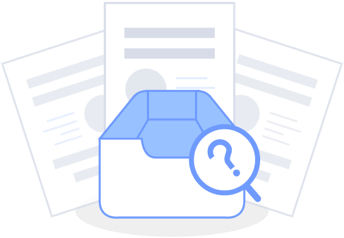 Completed
Completed[Copy Nokia] Use ESP32 to copy Nokia1110
PRO [Copy Nokia] Use ESP32 to copy Nokia1110
[Copy Nokia] Use ESP32 to copy Nokia1110
License
:GPL 3.0
Description
When I was a child, I was always very curious about how mobile phones worked, and I dreamed that one day I could make a unique mobile phone. Nowadays, mobile phones have more and more functions and their systems are becoming more and more complex. It is really difficult for one person to make a fully functional mobile phone alone. But using simple electronic knowledge to design a circuit board and stuff it into the previous feature phone case will be a very interesting production.
B station video connection: https://www.bilibili.com/video/BV1MP411u7Ru
In order to find more inspiration, the author spent money to buy an original Nokia 1110 mobile phone, known as the world's best-selling mobile phone, and then took it apart and studied its internal structure, as shown in the following figure:

The circuit board should be from the original factory, and the casing must be refurbished, but the two Apple marks on the circuit board confuse me...
There is only one circuit board in the original mobile phone. It is also very simple to copy. Just use a pencil to draw the outline of the PCB on the paper:


Based on the size of the original mobile phone PCB, the circuit inside has been redesigned. The main control chip uses ESP32 to realize functions such as color screen display, button drive, sound playback, SD reading, and lithium battery charging. It can run the NES game emulator and communicate via WiFi and Bluetooth. The photo of the completed device is as shown below.


PCB design
In order to adapt to the structure of the mobile phone case, the PCB is divided into two pieces. One piece implements the main functions of the device, and the other piece implements the tail plug and raises the screen. The proofed PCB is shown in the figure below.
The mainboard uses a 4-layer board with a thickness of 1.2MM, and the screen pad uses a double-layer board with a thickness of 1.6MM.

The comparison between the replica phone and the original phone is as follows:

Component selection
The core components are shown in the following table:
 |
 |
 |
 |
| ESP32-WROOM-32 | LCD 1.69 inch ST7789V 240*280 | Battery holder BC-2-351 | BL-5C battery |
 |
 |
 |
|
| Pot piece button 4MM | 8Ω 0.5W speaker 20MM | TF card holder clamshell type | WS2812 lamp bead 5050 |
 |
 |
 |
 |
| USB to serial port chip: CH340N | Lithium battery charging chip: TP4055 | 3.3V voltage regulator chip: RT9013-33G | Long press switch chip: EC190708 |
For other capacitors, resistors, diodes and transistors, you can check the BOM yourself!
Introduction to key circuits
Long press switch circuit

This part of the circuit uses the integrated chip EC190708 and the LDO chip RT9013-33G with an enable pin. Connect the Key pin of the EC190708 chip and press the shutdown button. In the shutdown state, connect the Key pin to ground for 3 seconds. OUT will output a high level, enabling the LDO and energizing the entire device. When the power-on state drops and the KEY pin is grounded for 3 seconds, the OUT pin will output a low level, turn off the LDO, and power off the entire device. The working current of EC190708 is about 6uA, and there will be a certain amount of power loss in the shutdown state. For a 1000mAh lithium battery, this loss is negligible.
DAC audio output circuit

This part uses the commonly used power amplifier chip LM4890, which can be used according to the circuit recommended in the chip manual. Currently, R24 is connected to a custom-made resistor, which can be replaced with an adjustable resistor to achieve volume adjustment.
ADC button
There are a total of 20 buttons on the mobile phone. It is obviously not enough to use an independent button IO pin. Therefore, ADC buttons are used here. A total of four ADCs are used, and four buttons are connected to each ADC. Up, down, left, right, 147*, 2580, and 369# each use one ADC. The schematic diagram is as shown below:

The sequence of 10K, 2K, 10K, and 20K is used for resistor selection. The voltages pressed by the same button are 0V, 1/6 VCC, 6/11 VCC, and 16/21 VCC respectively.
Software Design
This device is equivalent to a development board. You can use Arduino, MicroPython, etc. to write programs. Of course, you can also use the original ESP-IDF of the chip for development. Currently, LVGL and NES game simulators (refer to M5Stack) and NES game simulator firmware are transplanted. The game burning method is as shown below. The firmware and games can be downloaded from the attachment. The current firmware already contains 6 games.
The software code is completely open source: https://github.com/ospanic/Nokia1110_ESP32
If you don’t know how to compile the software, you can also directly use the firmware I compiled as shown below (download in the attachment at the end of the article):

A total of 6 games can be stored inside the device. The position and size of each game in Flash are as shown in the following table:
| Game number | Storage location | Maximum capacity | Default game |
| Game 1 | 0x200000 | 256KB | Contra |
| Game 2 | 0x240000 | 256KB | Shadow legend |
| Game 3 | 0x280000 | 256KB | Chinese chess |
| Game 4 | 0x2C0000 | 256KB | Red Fortress |
| Game 5 | 0x300000 | 512KB | Double dragon |
| Game 6 | 0x380000 | 512KB | Adventure island |
Users can also burn other Nes games to the above locations for replacement. The key functions during game operation are as shown below:

Comment sweepstakes
The last round of lottery ended on November 8. For details of the lottery, please refer to the attachment at the end of the article.
The next round of draws will be held at Station B on December 5, 2022, with more prizes. B station video link: https://www.bilibili.com/video/BV1MP411u7Ru
Likes and comments are welcome!

Video demonstration
Designed by Dr.Zhang (from OSHWHub)
Design Drawing
 The preview image was not generated, please save it again in the editor.
The preview image was not generated, please save it again in the editor. Empty
Empty


Comment